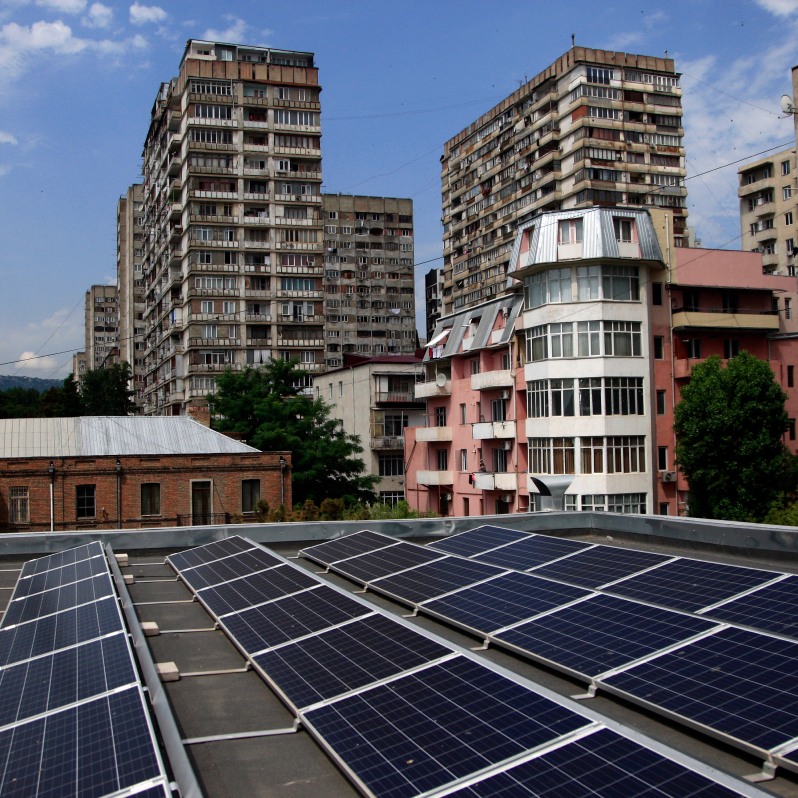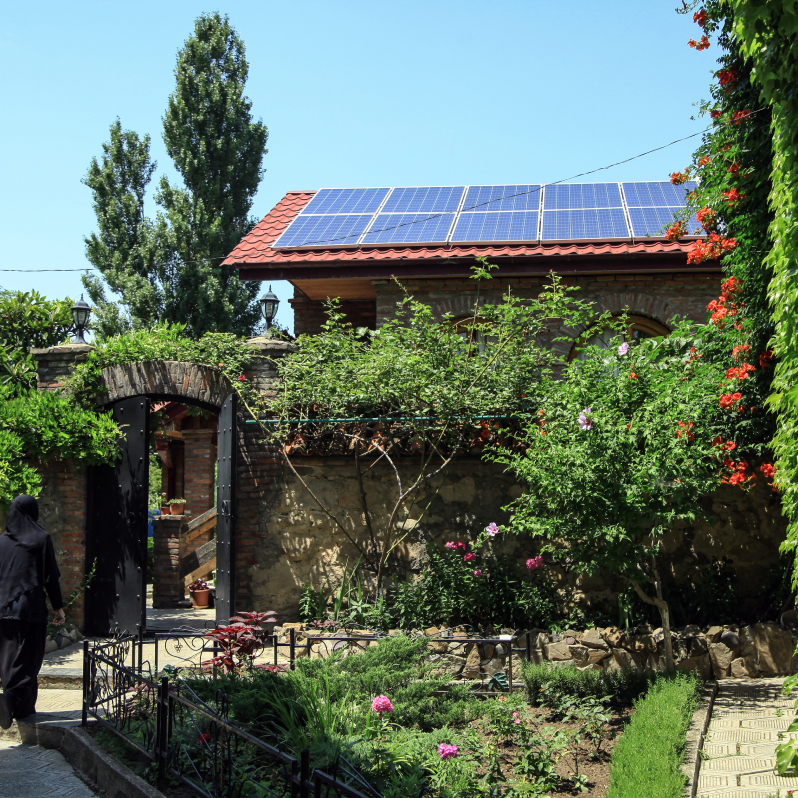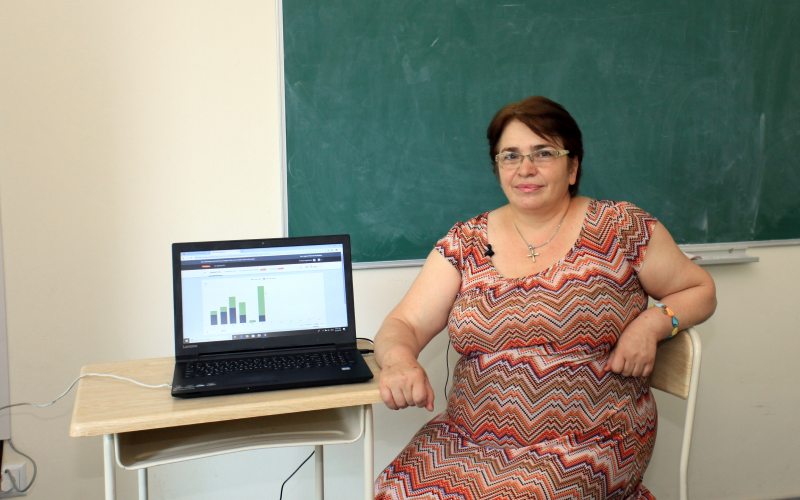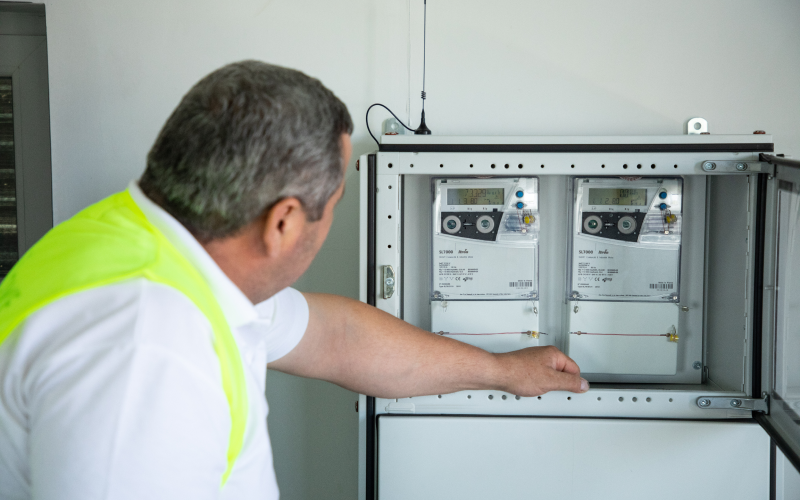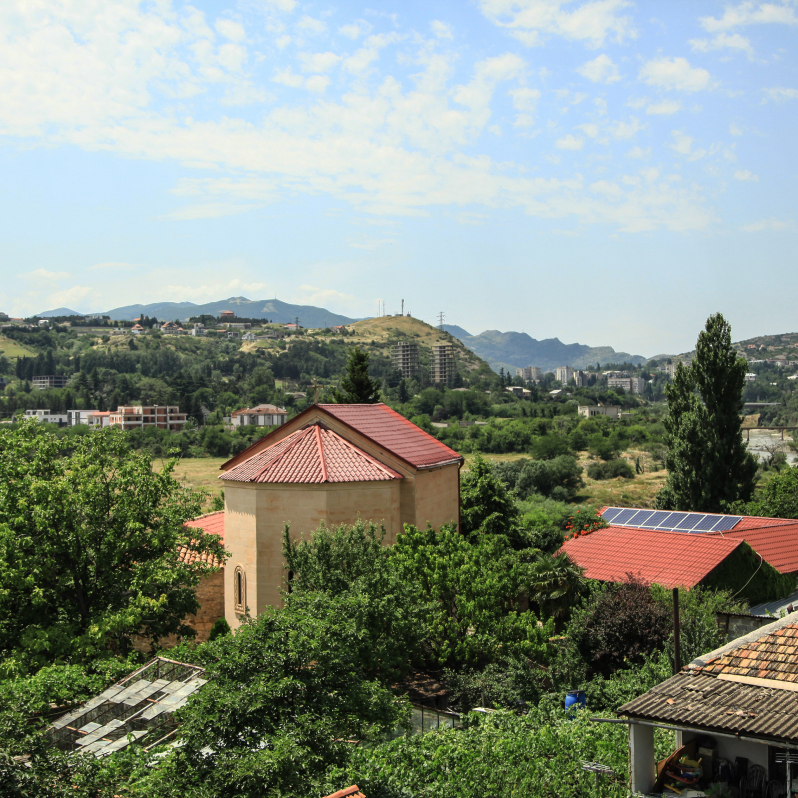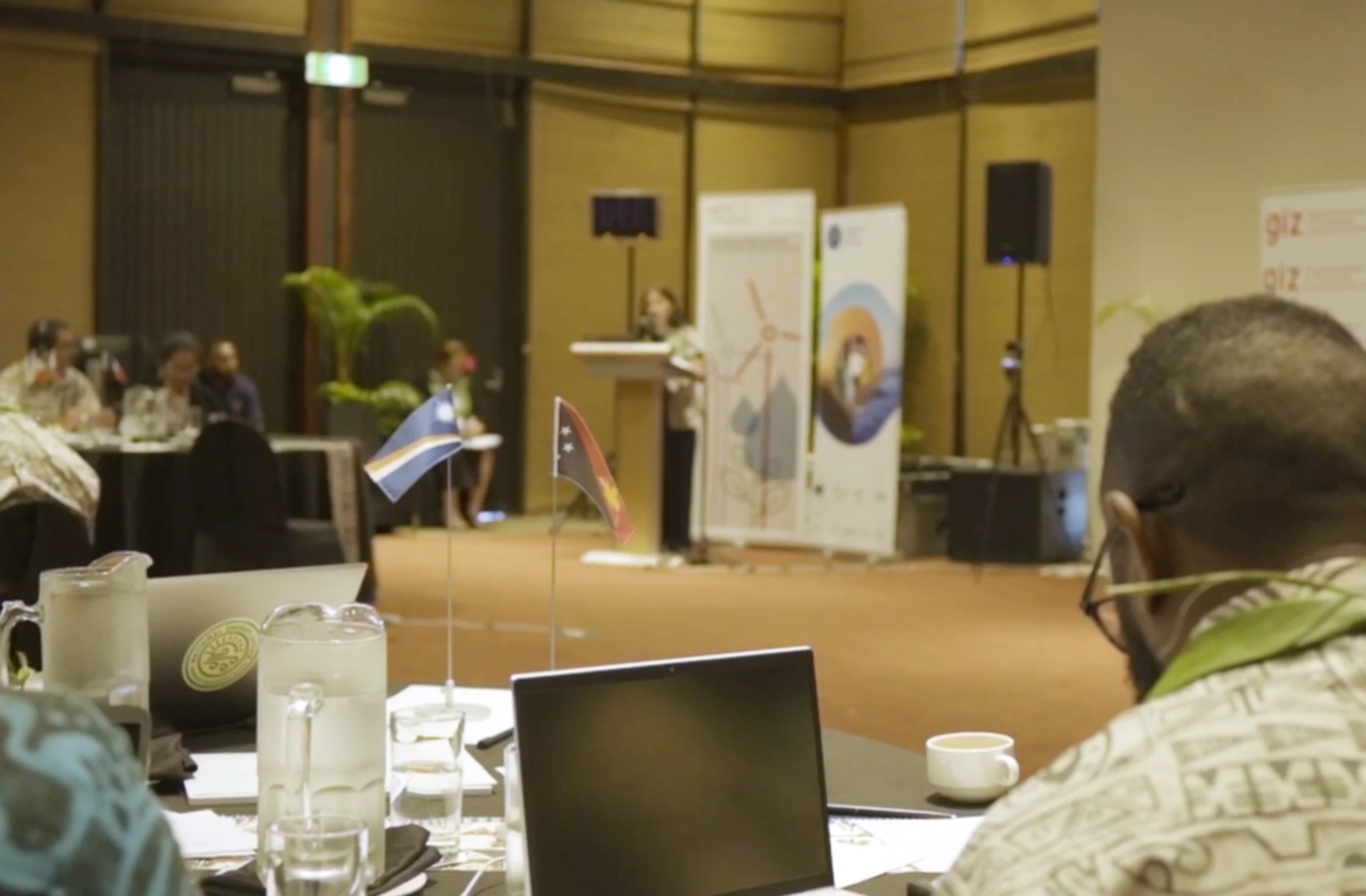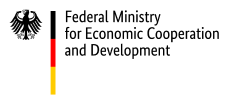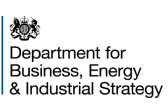Climate Vulnerability, Impact & Action in Georgia
Its unique geographic location makes Georgia an attractive destination for tourists and visitors, but it also makes it extremely vulnerable to the effects of climate change.
The frequency and severity of droughts, floods and landslides are all set to increase under current projections, while temperatures are expected to rise more than the global average by the end of the century.
This will have a serious impact on Georgia’s environmental and social heritage and burgeoning economic development, with crucial sectors such as agriculture, forestry and tourism being particularly hard-hit. Realizing the serious implications faced by climate change, the Georgian Government has been actively leading efforts to mainstream climate action policy since the first submission of their Intended Nationally Determined Contributions (INDC) under the Paris Agreement in 2015.
“Joining the Paris Agreement was an extremely important step for Georgia to push climate policy into the national political agenda, thereby formalizing climate action into national development strategies and programs”, notes Ms. Nino Tandilashvili, the First Deputy Minister of Environmental Protection and Agriculture (MEPA) of Georgia, where the development and implementation of national climate change policy is overseen.
“Without strong national climate policy and commitments from relevant sectoral authorities, climate change mitigation and adaptation processes will be less effective. The role of the Ministry of Environmental Protection and Agriculture is critical in building effective cooperation among different sectoral actors, bringing them into climate-related policy planning and implementation processes and simultaneously achieving Georgia’s climate and development goals.”
Georgia subsequently joined the NDC Partnership in 2017 and submitted their revised Nationally Determined Contributions (NDC) in 2020, developed with support from the Partnership. These updated NDC saw Georgia significantly raising its climate action goals, pledging an unconditional reduction of its greenhouse gas (GHG) emissions by 35% by 2030 compared to 1990, with this commitment possibly extending to a 50-57% reduction over the same period conditional to international support.
The NDC Partnership continues to actively support Georgia in NDC implementation through coordinating development partners and the mobilization of technical and financial resources. Through such support, Georgia has developed a and 2021-2023 Action Plan (CAP) as well as defined targets and indicators for emission reductions and climate mainstreaming across multiple key sectors. An updated CAP 2024-2025 is expected to be published by the end of 2023, bolstering Georgia’s NDC implementation through long-term strategies and short-term action plans.
“I firmly believe that Georgia successfully prepared the LT-LEDS due to significant experience in preparing the Climate Change Strategy and Climate Action Plan, driven by a whole-of-government and whole-of-society approach”, remarks Ms. Nino Tkhilava, the Head of Environment and Climate Change Department at the MEPA.
“Although reaching net-zero emissions by mid-century seems ambitious, it is also an incredible opportunity for a developing country like Georgia. I believe that steadily pursuing a low-emission development pathway will promote innovations and ensure robust investments in new technologies, creating additional economic opportunities and income for the country. Therefore, low-emission development can become a potential tool for Georgia and a model for other developing countries to reduce GHG emissions while simultaneously achieving economic welfare.”
The LT-LEDS strategically aligns Georgia’s unique national situation with the principles of the Paris Agreement, serving as a compass towards GHG reductions with guiding mechanisms and measures tailored for key designated sectors.
These GHG reduction measures relate to tentative ranges and targets for 2050 under both pessimistic and optimistic development pathways, with six scenarios elaborated in conjunction with corresponding sets of sector-specific mitigation actions. Georgia aims to become carbon-neutral by 2050, though this will require devising and adopting crucial new mitigation measures (following the With Additional Measures (WAM) scenario, which considers the additional effects of planned measures reported by Georgia, as opposed to the Without Measures (WOM) or With Existing Measures (WEM) options, which reflect trajectories determined by existing policies and measures.
The LT-LEDS without and With additional measures scenarios are modelled bottom up
Georgia emission development for wam and wom scenario, 2010-2050, mt c02e p.a
The WAM scenario includes additional decarbonization measures as of April 2022 to achieve carbon neutrality by 2050
Although the initial investment for low-emission infrastructure will be high, the initial capital outlay will be recovered over time through cost savings, requiring the Georgian government to only mobilize an additional USD 22 billion for a net-zero transition scenario. The investment will be used for strategic climate mitigation and adaptation projects, including long-term energy storage, hydrogen infrastructure, electric vehicle charging infrastructure and electricity grid upgrades and expansions.
In the short term, it is expected that implementing Georgia’s climate actions will require a further USD 760 million annually, or roughly 1.9% of annual gross domestic product (GDP). In the long-term, however, these investments, coupled with economy-shifting changes, are projected to increase GDP and employment gains, possibly yielding an extra USD 1 billion in gross value added (GVA) and 200,000 jobs by 2050.
“Georgia’s carbon-neutral goal will require significant financial investments”, notes Pablo Vieira, NDC Partnership Global Director. “Lack of financial resources is the primary barrier to Georgia’s sustainable and low-emission economic pathway, therefore effective mobilization of finance is critical to enabling the country to achieve and sustain the long-term positive impact of its transition to carbon neutrality. To attract funds, the country needs to act upon its ambition, promote science-based national policies and establish and maintain well-managed procedures for climate finance. The Partnership stands ready to support Georgia to strengthen the enabling environment for international investment in its transition to a carbon-neutral trajectory”.
Significant climate investments will further enhance Georgia's resilience by reducing import dependency, especially for the energy sector. This will curtail expenses for households, businesses and industry, while also paving the way for strategic technology investments for future green growth.
Georgia has significant renewable energy potential, particularly in hydro, wind and solar energy, with a net hydroelectric resource capacity of around 140 billion kilowatt hours (kWh), and an estimated achievable potential of 50-60 billion kWh. Wind energy has an annual generation potential of 8-10 terawatt hours (TWh), and suitable areas for wind power stations with a potential of 4 TWh have been identified.
Georgia also benefits from a high solar radiation, with 250-280 sunny days per year and solar energy potential ranging from 1,250-1,800 kWh/m2 depending on the region. The country is also well positioned to tap into the growing hydrogen market as well as leapfrogging traditional gasification by adopting heat pumps for domestic heating. Moreover, Georgia’s potential as a carbon capture hub in the Black Sea could bridge emissions from Eastern Europe and Central Asia, with its substantial forest coverage of around 40% offering a chance to enhance carbon sequestration.
With proper backing and guided by decarbonization investments, the WAM approach could significantly bolster employment in Georgia. Initially, conventional technology roles will persist during the early stages of WAM, facilitating a smooth transition to a low-carbon economy. Over time, low-carbon employment could fully supplant traditional roles, albeit with potential transition risks such as short term, sector-specific employment impacts.
It is estimated that by 2050, about 90% of new jobs resulting from guided investments will align with low-carbon technologies.
The transport, power and industry sectors will primarily drive incremental employment by 2050. Notably, the clean transport sector spearheads job creation in the WAM scenario, constituting over 30% of 2050’s projected job pool from WAM investments. Industry, power, and buildings collectively further contribute to around 15% of the 2050 job pool arising from the same investments.
Decarbonization will also boost demand for mid- and low-skill workers with technical expertise, contrasting with business-as-usual projections. The shift will highlight existing gaps in skilled agricultural and craft roles, necessitating secondary education, apprenticeships or on-the-job training. Consequently, the demand for professionals and associates are expected to dwindle over time, except for higher management roles, particularly in the short term. This transition could also potentially result in more jobs in sectors dominated by men, posing inclusivity challenges which will need addressing.
Georgia can use this pivotal opportunity to ensure gender mainstreaming in the green transition to a low-carbon economy by integrating gender considerations in policy and decision-making processes, promoting equal participation and representation of women in green sectors, providing targeted training and capacity-building opportunities and implementing gender-responsive monitoring and evaluation mechanisms.
“With rich renewable resources and a strong desire, Georgia has the potential to pursue green pathways while benefitting from domestic emission reduction measures and contributing to a global low-carbon shift”, explains Ms. Margalita Arabidze, the Head of Energy Efficiency and Renewable Energy Policy and Sustainable Development Department of the Ministry of Economy and Sustainable Development of Georgia.
“The country has significant renewable energy potential for electricity generation through wind, solar and hydro, creating numerous foreign investment possibilities”.
“The NDC Partnership is committed to supporting Georgia’s robust low-emission development pathway”, notes Pablo Vieira. “Through increased ambition and collective implementation, Georgians stand to benefit greatly from a considered, long-term approach to national development that prioritizes diversity, job-creation, environmental stewardship and sustainability, creating an inspiring model for other developing countries around the world.”

